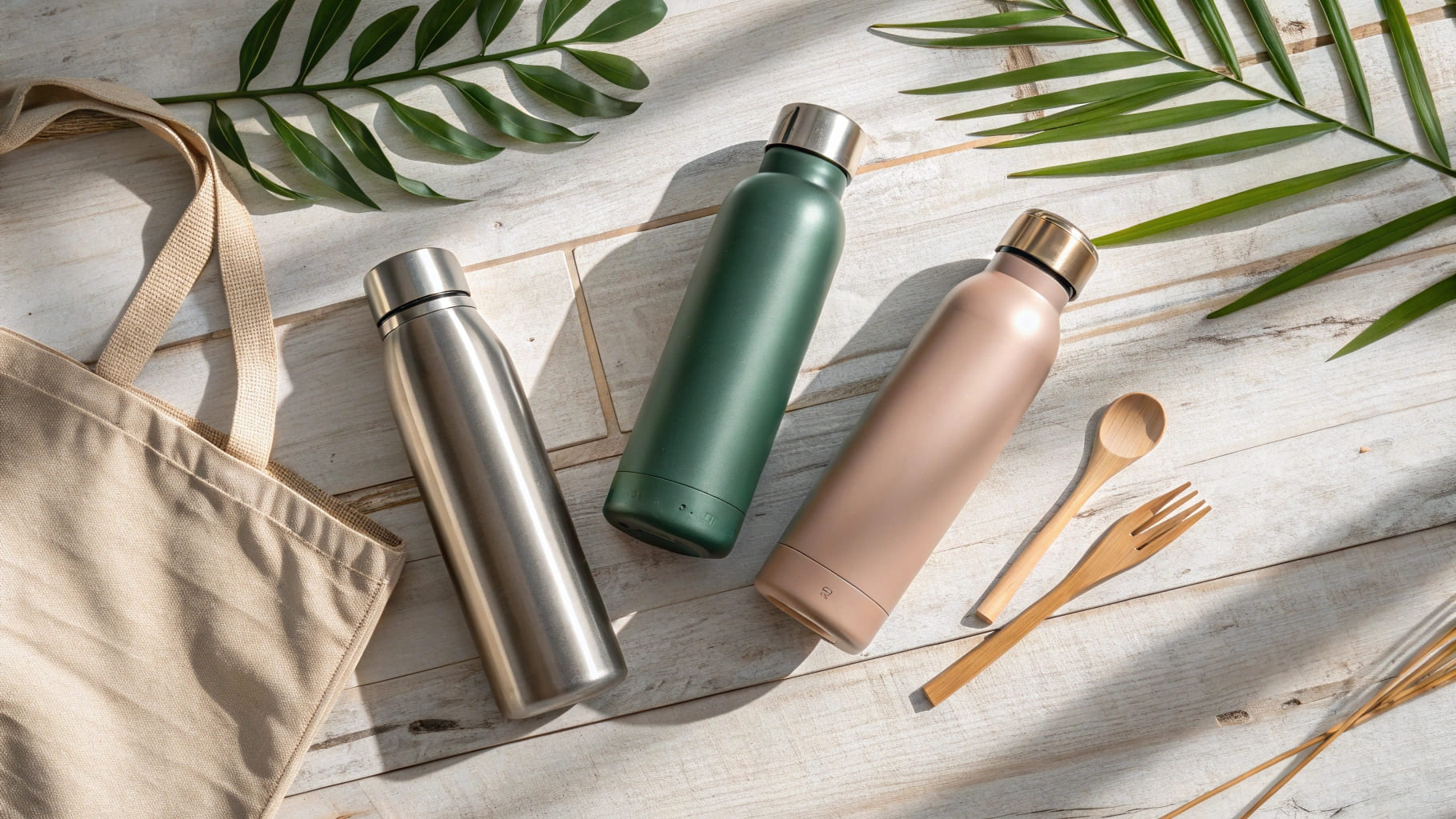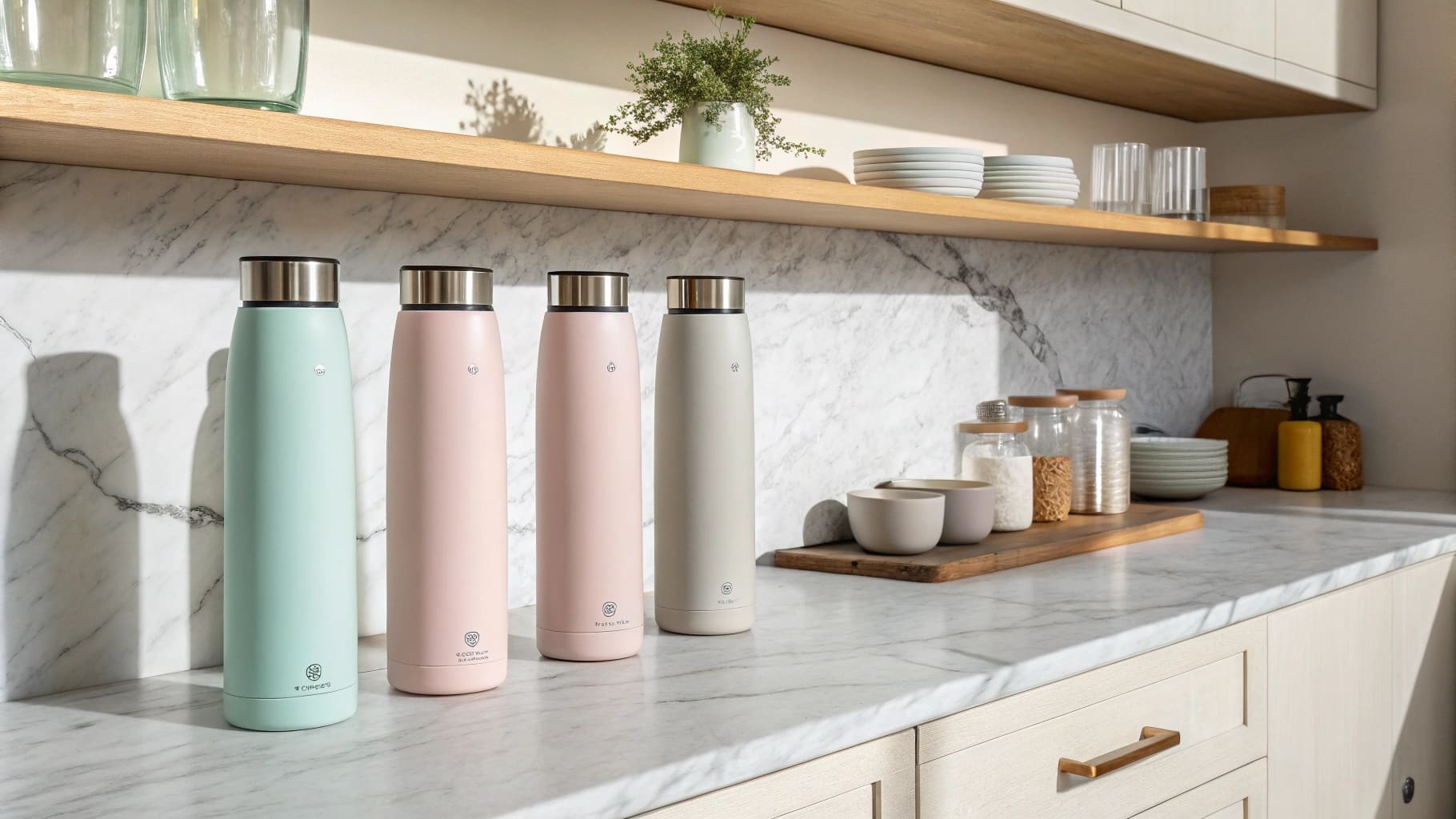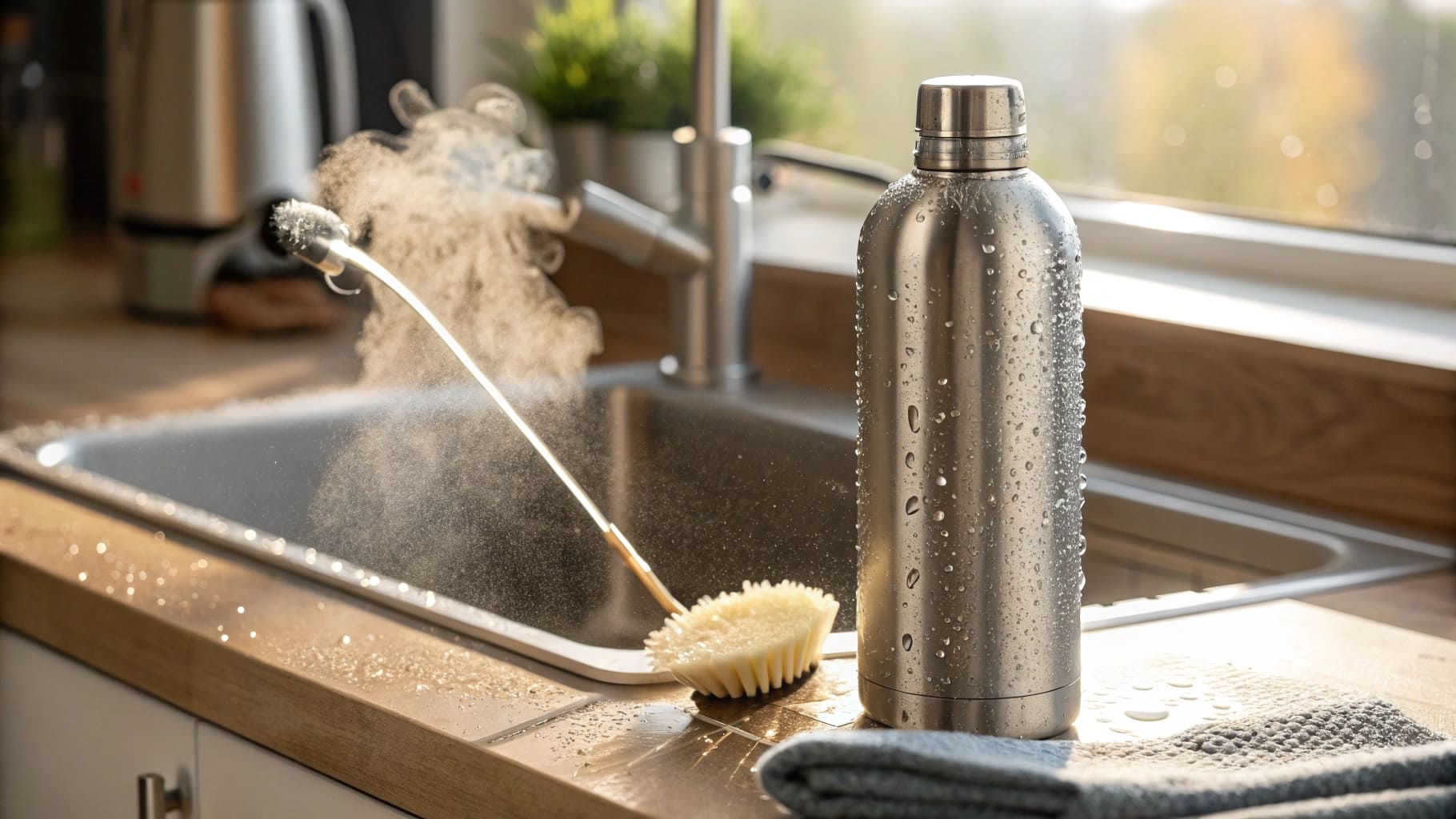Tired of fumbling with caps and dealing with spills? Want effortless hydration for your customers? Discover the ideal solution that combines convenience with style.
The best insulated water bottles with straw lids provide easy, one-handed sipping, keeping beverages at the ideal temperature for hours. They merge practicality with modern aesthetics, perfect for active individuals and busy professionals seeking convenience.

As a manufacturer in the stainless steel drinkware industry for many years, I've seen trends come and go. But the demand for user-friendly hydration solutions, particularly bottles with integrated straw lids, is consistently strong. My clients, procurement officers like Mark from Canada and startup founders across Europe, always ask about options that make drinking water or their favorite beverages easier throughout the day. They tell me their customers are busy and appreciate features that simplify their lives. So, let's look deeper into why these bottles are a smart choice for your inventory and what features really matter.
Is it better to have a water bottle with a straw?
Customers asking about straw lids? Wondering if it's a true market need or just a passing trend? Let's explore if straw lids really offer an advantage.
For many users, a straw lid is better. It allows for quick, one-handed drinking, ideal for driving, exercising, or working at a desk. From a B2B perspective, it's about offering diverse options that meet specific consumer demands for convenience and, importantly, hygiene.

When I talk to buyers like Mark, who sources stainless steel water bottles for his Canadian brand, the conversation often turns to specific user needs. He understands his customers want products that fit seamlessly into their daily routines. A straw lid isn't universally "better" than a screw cap or a spout lid, but it excels in certain situations.
Who Benefits Most?
Think about your target audience.
- Drivers: They need to keep their eyes on the road. A straw lid allows for quick sips without tilting the head or the bottle, minimizing distraction.
- Office Workers: Many people prefer to sip water throughout the day at their desks. A straw makes this unobtrusive and easy.
- Gym-goers & Athletes: During a workout, easy access to hydration is key. Straws allow for quick refreshment without unscrewing a cap.
Hygiene and Design: Key Selling Points
The biggest concern with straw lids used to be cleaning. I always advise my clients to look for designs where the straw and nozzle components are easily detachable. This is crucial for thorough cleaning and preventing any buildup. As a supplier, we at Icobottle ensure our straw lid designs prioritize this. We use food-grade silicone and BPA-free plastics for these parts, which are also easy to clean. Offering a cleaning brush as an accessory can also be a good value-add.
Here’s a simple breakdown for B2B considerations:
| Feature Focus | Straw Lid Advantage | B2B Sourcing Tip |
|---|---|---|
| Ease of Use | One-handed operation, no need to tilt bottle | Test mechanisms for smooth, reliable flip/sip action. |
| Target Markets | Commuters, office staff, fitness enthusiasts | Consider offering as an option alongside standard lids. |
| Hygiene | Parts can be separated for thorough cleaning | Prioritize designs with easily detachable, cleanable straws. |
| Material Safety | Direct contact with mouth | Ensure straw and nozzle are BPA-free, food-grade materials. |
For B2B buyers, offering a high-quality, hygienic straw lid option broadens the appeal of your water bottle range. It shows you're listening to consumer demands for convenience.
What is the shelf life for water bottles?
Worried about product longevity and value? Wondering how long your inventory of water bottles will truly last? Let's discuss the durability of stainless steel.
High-quality stainless steel water bottles don't really have a "shelf life" in the traditional sense. With proper care, they can last for many, many years, offering excellent long-term value and sustainability.

When procurement officers ask me about the "shelf life" of our stainless steel water bottles, I understand their concern. They want to invest in products that offer lasting value, not something that will degrade quickly. This is where stainless steel truly shines, especially for a B2B model focused on quality.
Why Stainless Steel Lasts
The key is the material itself. We primarily use food-grade 304 (18/8) stainless steel for our Icobottle products. Sometimes, for specific applications requiring even higher corrosion resistance, 316 stainless steel is used.
- Corrosion Resistance: Stainless steel is inherently resistant to rust and corrosion. It doesn't break down or react with beverages like acidic fruit juices or coffee.
- No Leaching: Unlike some plastics, stainless steel doesn't leach chemicals into the contents, even after prolonged use or exposure to temperature changes. This means the water tastes like water, and the bottle remains safe.
- Durability: These bottles are tough. They can withstand accidental drops and daily wear and tear far better than glass or plastic alternatives. I've had customers tell me stories about dropping their Icobottle bottles multiple times, and while they might get a dent, they remain perfectly functional.
What This Means for B2B Buyers
For businesses like Mark's in Canada, which rebrand and sell premium products, this durability is a core selling point.
- Sustainability Angle: A long-lasting bottle reduces waste from single-use plastics. This is a powerful message for environmentally conscious consumers in markets like Europe and North America.
- Premium Perception: A product that lasts reflects well on the brand. It signifies quality and good investment.
- Reduced Returns/Complaints: High durability means fewer issues with product failure, leading to better customer satisfaction.
Essentially, the "shelf life" is indefinite with proper care – mainly regular cleaning and avoiding extreme physical damage. This makes stainless steel water bottles a reliable and sustainable choice for importers and brands.
| Aspect | Stainless Steel Advantage | B2B Implication |
|---|---|---|
| Material Life | Extremely long; resistant to degradation | Supports premium branding and sustainability claims. |
| Safety | No chemical leaching, inert material | Assures end-consumer safety and product integrity. |
| Maintenance | Simple cleaning maintains longevity | Low hassle for the end-user, enhancing satisfaction. |
| Value | High perceived value due to durability and reusability | Justifies a higher price point compared to plastic. |
This longevity is a significant factor that makes stainless steel bottles, like the ones we produce at Icobottle, a smart investment for any business in the drinkware market.
What are the best water bottles to avoid Microplastics?
Concerned about microplastics in drinking water? Want to offer your customers the safest hydration option? There's a clear winner when it comes to material choice.
Stainless steel water bottles are fundamentally the best choice for avoiding microplastics originating from the container itself. They provide a safe, inert barrier for your beverages.

The concern over microplastics is no longer a niche worry; it's a mainstream health consideration. I regularly discuss this with clients, especially those targeting health-conscious demographics in North America and Europe. They understand that "microplastic-free1" is a powerful selling point.
Why Stainless Steel is Superior
The issue with many plastic bottles, even those labeled "BPA-free," is that the plastic itself can degrade over time, especially with use, washing, and exposure to heat. This degradation can release microplastic particles into the water.
- Inert Material: Stainless steel, like the food-grade 304 we use at Icobottle, is stable. It doesn't break down and shed particles into your drink.
- No Chemical Leaching: Beyond physical particles, stainless steel doesn’t leach chemicals. This contrasts with some plastics that might release other compounds even if they don't shed visible particles.
I remember a conversation with Mark, my Canadian client. He was very specific about wanting to assure his customers that his branded bottles were a healthy choice. We discussed how emphasizing "microplastic-free" through the use of stainless steel bodies could directly address this growing consumer anxiety.
Lid and Straw Considerations
While the bottle body is the primary defense, it's also important to consider the materials used for lids, straws, and seals.
- BPA-Free Components2: At Icobottle, we ensure that any plastic or silicone parts, such as those in our straw lids or sealing rings, are made from BPA-free, food-grade materials. This is a standard expectation now.
- Silicone Seals: Food-grade silicone is generally considered a very stable and safe material for seals and o-rings, less prone to degradation than many plastics.
Communicating the Benefit to Customers
For B2B buyers, highlighting the microplastic-free aspect of stainless steel bottles is a strong marketing strategy.
| Feature | Stainless Steel Bottles | Plastic Bottles (General) |
|---|---|---|
| Microplastic Shedding Risk (Body) | Virtually None | Potential, especially with wear and heat |
| Material Stability | High, inert | Varies, can degrade |
| Consumer Peace of Mind | Significant, addresses health concerns directly | Often a point of concern |
| Marketing Angle | "Microplastic-Free Hydration," "Safe & Pure" | Focus on "BPA-Free" if applicable, but less absolute |
By choosing high-quality stainless steel bottles and ensuring any accompanying parts are also made from safe, stable materials, you can confidently offer your customers a superior solution for avoiding microplastic contamination from their drinkware. This is a key differentiator in today's health-aware market.
Conclusion
Insulated stainless steel bottles, especially with straw lids, offer convenience, durability, and safety from microplastics, making them a top choice for discerning B2B buyers and their customers.

